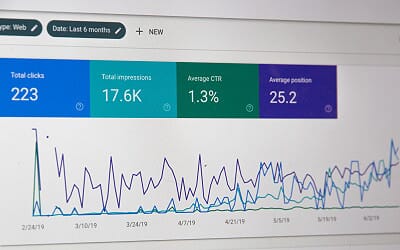1. A newsworthy subject
In order for a campaign to be a success, it must be newsworthy, engaging, and different. It should get people talking. Journalists must want to cover it, and consumers must want to read it, share it, and engage with it. To determine whether a story is ‘newsworthy’, try to place yourself in the mind of your target audience. What might feel like news to you, may not provide a big enough hook to those who aren’t yet invested in the minutiae of your brand.
It is also important that the news is genuine. Discerning media and consumers will be able to identify a flimsy news story that is based on little fact and this could do your brand’s reputation more harm than good.
2. Link to your brand message
However, it is not enough for your story to simply be newsworthy; it must also communicate the message that your brand wants to convey if it is to be truly effective. Afterall, generating a conversation is meaningless if it doesn’t help you to achieve your business’s goals.
Ask yourself what you are ultimately trying to achieve – are you trying to change perceptions of your brand? Raise awareness of a new product or service? Promote your USP? Establish your brand as an expert in a certain field? Reach a new audience? Whatever your strategic goals are, a good campaign will help you achieve them by providing you with an opportunity to communicate your message in a way that resonates with the audience you are trying to reach. There is very little point in pouring effort into a great story that offers no opportunity to meaningfully link back to what your brand really wants to say.
3. Timeliness
Timing is crucial and a badly timed campaign can have a detrimental effect on its chances of success. This has never been more apparent than during the COVID-19 crisis, when brands have learnt that putting out a campaign that seems tone deaf, insensitive or irrelevant to people’s current circumstances can do far more harm than good.
However, this is also true during less exceptional times and the most successful campaigns will always be those that are topical and tap into the moment. Before launching a campaign ask yourself, ‘why now?’. If the answer is not obvious, or if you can think of another time that would be more relevant for the launch, it is better to hold off than risk compromising the results of a campaign that has the potential to perform better at a later date.
To help determine the best time for your campaign, stay in tune with your audience and ensure you are putting out content when they are most likely to be susceptible to your messaging. For example, if your brand’s purpose is to help people make healthy food decisions, then launching a campaign at Christmas, when people are most likely to be indulging, may damage its chances of success.
In the run-up to a campaign, take a regular temperature check of your audience to ensure that the timing is still relevant. Check what they are talking about, what they are engaging with on social media, and what else is being written in the press about the subject.
4. Opportunity to drive traffic
PR has the power to drive high quality, targeted traffic that is already engaged in your brand, product or industry. This traffic can be directed to your website or to a retailer, where you will ultimately have the opportunity to convert these new visitors into sales.
To maximise online traffic, ensure that the web links are relevant and add value for the reader, by offering them the opportunity to find out more about what they have just read, or to gain tips and advice. If driving web traffic is your primary goal, efforts should be focussed on securing online coverage, including within online media outlets, e-newsletters and on social media, where you will have the opportunity to include click-through links to relevant content on your website. That said, never underestimate the power of print media coverage for generating brand awareness – it’s just harder to track through web traffic.
5. Multi-platform content
Rolling a campaign out across multiple platforms will maximise exposure and impact. To determine which platforms to prioritise, consider your audience and target the channels that they engage with. Think beyond the traditional media outlets that they might read and consider ways to engage with them across other platforms that they use, including social channels. It is vital that the content appears in places your audience trusts and spends time.
What’s more, it is not enough to simply roll out the same content across each platform. What works for online press, may not translate well across Instagram, Facebook, or LinkedIn. Indeed, it’s likely that a very different approach will be required across each platform. Whilst messaging and creatives must remain consistent and cohesive, creating a host of different content types, from media stories, to photography, video content and social media posts, will offer your campaign the best chance of success and maximum reach. For example, one piece of thought- provoking research could form a white paper, media story, blog posts, LinkedIn posts, newsletter content, instructional videos, interactive polls, an infographic, influencer-led activity and social media posts and competitions. Sound fanciful? We know it’s possible because we’ve done it.
6. Measurement
Measuring success is one of the most important aspects of a successful PR campaign. Afterall, without comprehensive analysis and measurement of results, you have no way of knowing whether the campaign was successful in achieving what it set out to achieve.
It’s crucial to measure against the initial goals for the campaign. If your goal was to drive web traffic, measure the number of hits you received from websites and social media pages that covered your story. If your objective was to reach an audience of high earners, evaluate whether the campaign was featured in places that attract this demographic. If you aimed to change the perception of your brand, assess whether the campaign conveyed your new key messages. Column inches and large readerships are meaningless if they are wasted on the wrong audience or fail to clearly communicate your brand’s message.









